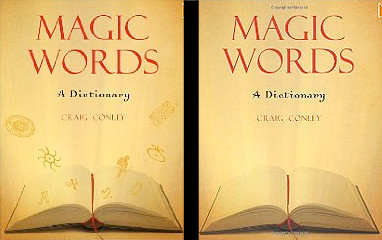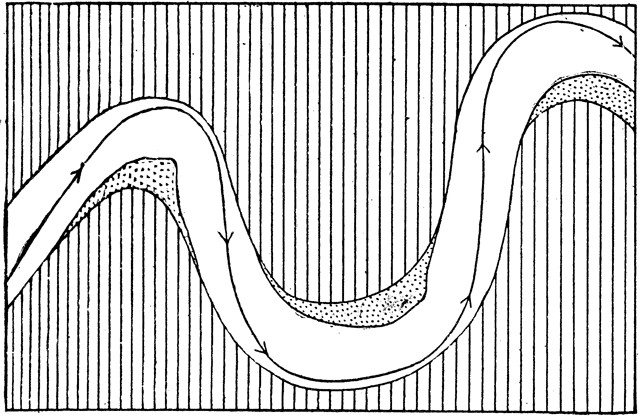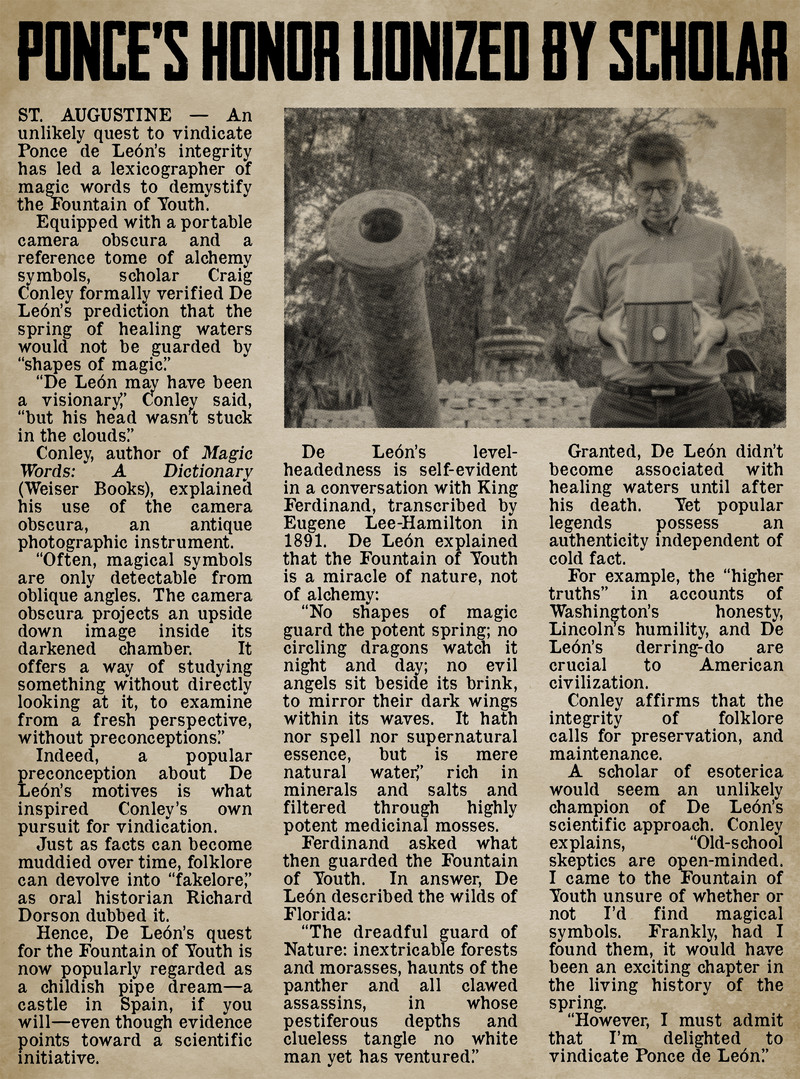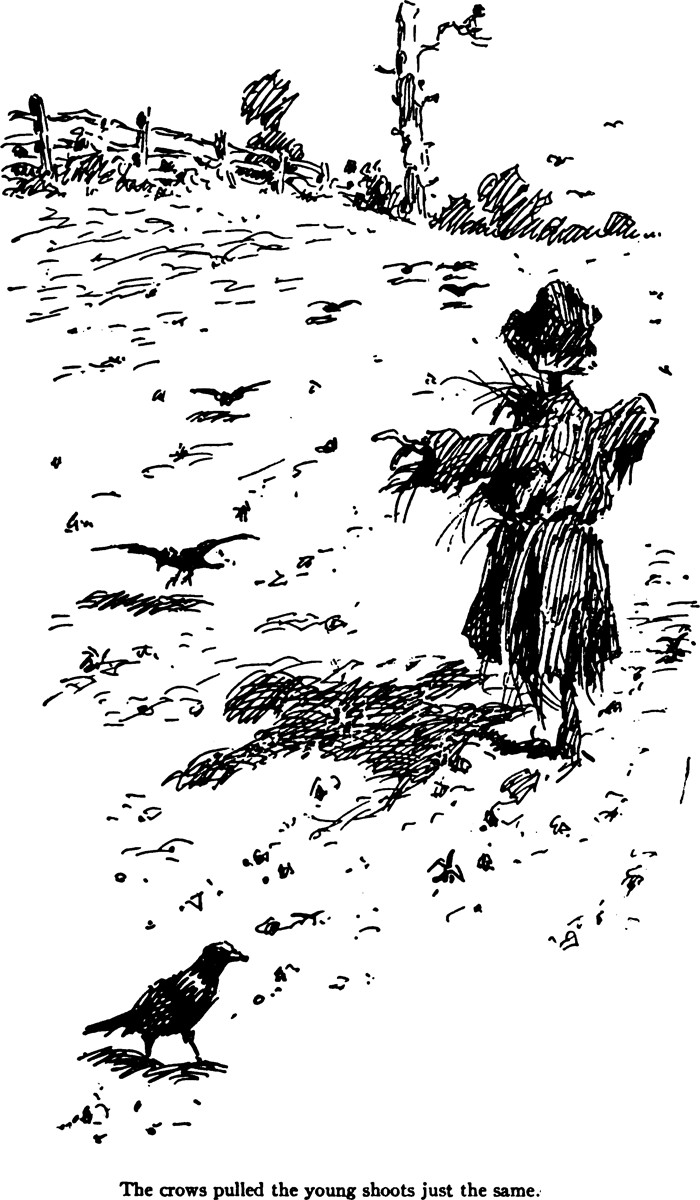I Found a Penny Today, So Here’s a Thought
|





 |
|
|
 |
 |
 |
When the treasured Enrique Vila-Matas says that "Occasionally my sense of irony reaches Paris itself" (within the delightful Never Any End to Paris), we might add that it's a longer journey than one might think, when one factors in the meanderings of the Seine. Speaking of irony, we love this Vila-Matas original: "Irony is the highest form of sincerity." |

 |
|
|
 |
 |
 |
This one's courtesy of William Keckler: If you read the Collected Works of Franz Kafka only in elevators, a little bit at a time, it will take you years but you will probably appreciate his writing at a much deeper level. |


 |
|
|
 |
 |
 |
See if this very strange phenomenon happens to you: Do the mystical symbols on the cover of Magic Words: A Dictionary inexplicably disappear in Amazon.com's scan of the softcover? Note that if you click on the Kindle edition of the book, the mystical symbols re-materialize. Here's the link to compare the two covers. Is it just us? If not, what's behind this "now you see it, now you don't" routine over at Amazon?

Scans of the Kindle edition (left) and the softcover (right). Who or what is behind the magical disappearance of the mystical symbols?
|


 |
|
|
 |
 |
 |
Ponce’s Honor Lionized by Scholar
St. Augustine, Florida — An unlikely quest to vindicate Ponce de León’s integrity has led a lexicographer of magic words to demystify the Fountain of Youth.
Equipped with a portable camera obscura and a reference tome of alchemical symbols, scholar Craig Conley formally verified De León’s prediction that the spring of healing waters would not be guarded by "shapes of magic.”
"De León may have been a visionary,” Conley said, "but his head wasn’t stuck in the clouds.”
Conley, author of Magic Words: A Dictionary (Weiser Books), explained his use of the camera obscura, an antique photographic instrument.
"Often, magical symbols are only detectable from oblique angles. The camera obscura projects an upside down image inside its darkened chamber. It offers a way of studying something without directly looking at it, to examine from a fresh perspective, without preconceptions.”
Indeed, a popular preconception about De León’s motives is what inspired Conley’s own pursuit for vindication.
Just as facts can become muddied over time, folklore can devolve into "fakelore,” as oral historian Richard Dorson dubbed it.
Hence, De León’s quest for the Fountain of Youth is now popularly regarded as a childish pipe dream—a castle in Spain, if you will—even though evidence points toward a scientific initiative.
De León’s level-headedness is self-evident in a conversation with King Ferdinand, transcribed by Eugene Lee-Hamilton in 1891. De León explained that the Fountain of Youth is a miracle of nature, not of alchemy:
"No shapes of magic guard the potent spring; no circling dragons watch it night and day; no evil angels sit beside its brink, to mirror their dark wings within its waves. It hath nor spell nor supernatural essence, but is mere natural water,” rich in minerals and salts and filtered through highly potent medicinal mosses.
Ferdinand asked what then guarded the Fountain of Youth. In answer, De León described the wilds of Florida:
"The dreadful guard of Nature: inextricable forests and morasses, haunts of the panther and all clawed assassins, in whose pestiferous depths and clueless tangle no white man yet has ventured.”
Granted, De León didn’t become associated with healing waters until after his death. Yet popular legends possess an authenticity independent of cold fact.
For example, the "higher truths” in accounts of Washington’s honesty, Lincoln’s humility, and De León’s derring-do are crucial to American civilization.
Conley affirms that the integrity of folklore calls for preservation, maintenance, and protection.
A scholar of esoterica would seem an unlikely champion of De León’s scientific approach. Conley explains, "Old-school skeptics are open-minded. I came to the Fountain of Youth unsure of whether or not I’d find magical symbols. Frankly, had I found them, it would have been an exciting chapter in the living history of the spring.
"However, I must admit that I’m delighted to vindicate Ponce de León.”
|




 |
|
|
 |
 |
 |
You can feel the pulse in the slipping away — Geof Huth |




 |
|
|
 |
 |
 |
The Toronto Standard on our latest book, Franzlations: Gary Barwin, Hugh Thomas and Craig Conley use their source material only as a starting point, reworking Kafka’s writings into "imaginary parables” and invented aphorisms. The man himself would appreciate their explanation: "Sometimes this means keeping the cage and replacing the bird.” |


Page 150 of 170

> Older Entries...

Original Content Copyright © 2025 by Craig Conley. All rights reserved.
|







